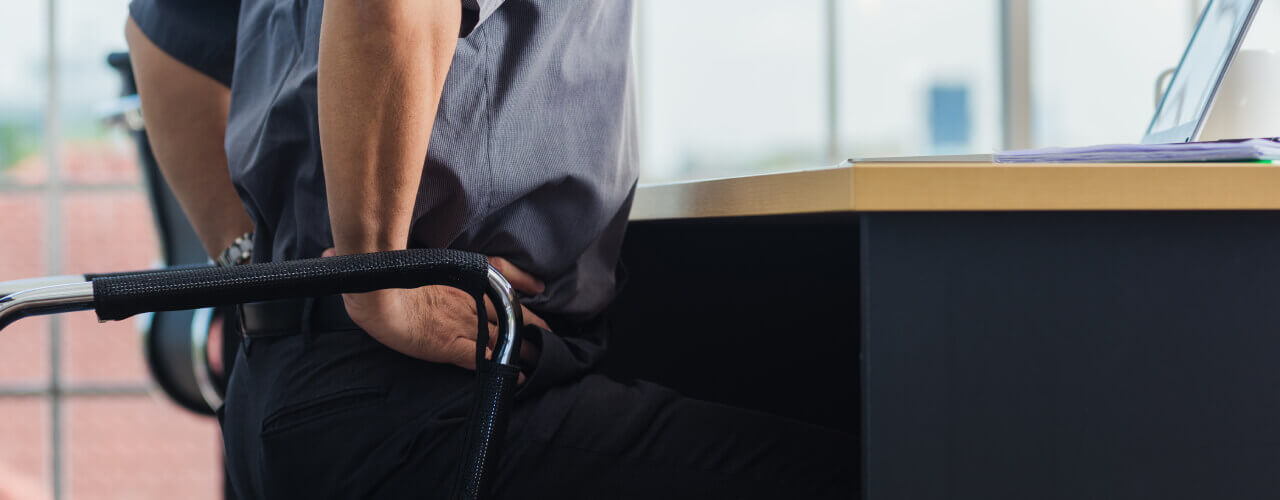The majority of Americans will experience temporary back pain at some point in their lives. When back pain is chronic, it can have a significant impact on one’s quality of life. According to the American Physical Therapy Association, back pain is the most common type of pain experienced by Americans.
You might be surprised to learn that one in every four Americans has experienced back pain in the last three months! This just goes to show how widespread back pain is.
The good news is that you don’t have to suffer from back pain indefinitely. You have options, beginning with reading this blog and contacting our team for assistance!
Taking a proactive approach, such as working with one of our in-home physical therapists, can help you find long-term relief from back pain. For more information on how physical therapy can help relieve your back pain, please contact Optimal Home Rehab.
The 3 most common types of back pain
Did you know that the World Health Organization estimates that back pain costs approximately 149 million workdays? It’s the unfortunate truth.
Back pain affects 60-70% of people in industrialized nations, causing significant disruption to daily life and preventing you from participating in certain tasks and activities that you enjoy. Back pain, if left untreated, can lead to more serious health problems.
Back pain is classified into three types:
- Chronic Back Pain: If back pain lasts longer than three months without subsiding, it is classified as chronic.
- Recurrent Back Pain: This occurs when acute back pain goes away for a while, but then comes back periodically.
- Acute Back Pain: Acute back pain is the most common type. This is a temporary pain that goes away in less than three months.
Back pain is rarely severe and usually resolves on its own. Recurrent and chronic pain, on the other hand, may be an indication of a more serious health problem.
Some of the physical issues that may be causing your back pain include osteoporosis, degenerative disc disease, a herniated disc, fractures, and lumbar spinal stenosis.
How will my therapist diagnose my back pain?
The first step in collaborating with an in-home physical therapist is to discuss your symptoms. Your therapist will also review your medical history to determine if there have been any previous accidents or conditions that could be causing your current discomfort. Furthermore, the physical therapist will examine you to see how you can move and act as a result of your back pain.
During the evaluation process, some tests may be performed to look for signs of more serious conditions. If your physical therapist suspects that a serious health issue is causing your back pain, you will most likely be referred to a doctor for further evaluation. In the vast majority of cases, this will be the case.
What should I expect from my PT treatments?
Over the course of your work with an in-home physical therapist, your progress will be monitored to ensure that you are recovering.
The intention is to get rid of the back pain so you can resume your daily routine. One of the most important aspects of working with a physical therapist is learning movement and everyday activity techniques that can help you avoid recurrent pain.
Your trainer, for example, will demonstrate appropriate posture exercises that you can use at home, at work, or when participating in recreational activities.
You will also learn how to keep up a regular exercise regimen to keep your supportive muscles strong, which will prevent the back pain from coming back. If your weight is contributing to your back pain, you will learn nutritional advice in addition to exercise to control your weight and keep back pain at bay.
Common physical therapy treatments for back pain
Once your back pain has been diagnosed, a customized course of home-based physical therapy will be recommended to you. Treatment for back pain varies depending on the diagnosis, age, weight, physical ability, and other factors.
The following treatments can be included in the treatment plan:
- Posture work to provide better support for your back
- Manual therapy and spinal manipulation to improve joint mobility and relieve tissue pain
- Stretching and strength building exercises
- Ice or heat treatments for pain relief
- Education on how to take better care of your back, such as proper methods of lifting, bending, sitting, and sleep positions
Call Optimal Home Rehab today for more information
The key is to be proactive in dealing with back pain. If the pain lasts more than three months, it is unlikely to go away on its own.
Call our team today to set up your initial appointment with an in-home physical therapist!



